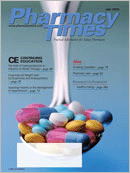Publication
Article
Pharmacy Times
Help Your Patients Get Accurate Blood Glucose Readings
With over 20 million patientswith diabetes in the UnitedStates, many of these patientsmust rely on monitoring their blood glucoseat home to ensure that they are stayingwithin their target goals. Unfortunately,too often patients receive inaccurate glucosereadings due to a variety of factors.This article will focus on some commoncauses of inaccuracies with glucometerresults, including environmental factors,hematocrit issues, sampling errors, andtesting interferences.
Environmental Factors
Test strips that are stored in vials, asopposed to strips that are individuallywrapped in foil, are susceptible to theeffects of oxygen and moisture. Severalsmall studies that reviewed the effects ofglucose test strips left open in their vial fortimes ranging from 2 to 18 hours showedvariances in blood sugar results from 9%higher to 60% lower than the actualresults. A study in Diabetes by Lilavivat etal, in 2002, reported varying results forone patient between 94 and 307 mg/dLover the course of a few weeks. It wasdetermined that the patient's test stripshad been exposed to moisture. These factorsmust not be overlooked, given thatmany patients will keep their testing suppliesin a bathroom or kitchen environment.Make sure that your patients understandto always keep their test strip vialclosed when not in use.
Heat exposure can also be a factor forvials of test strips as well as the individuallyfoil-wrapped test strips. This is particularlya consideration for patients whouse mail order as well as patients living inwarmer, humid climates who may notuse a source of air conditioning in theirhome. Counsel patients to make surethat they do not leave their test strips inthe mailing box for extended periods oftime if they order by mail and to use insulatedcool packs if needed when in thehome or when traveling. If they noticeany acute changes in their glycemic control,such as erratic ranges, considererroneous readings as a possible cause.
Hematocrit
Although most glucometers now convertblood samples to plasma measurements,the actual measurement is madewith whole blood samples. Thereforeabnormal hematocrit (Hct) values lead toinaccurate readings. Recall that low Hctlevels occur commonly in pregnant or elderlypatients or those with anemia, renaldisease, and some types of cancer. HighHct levels can occur during dehydration,for example. The errors that occur withglucometer testing will usually be a falselylow reading with a high Hct sample anda falsely high reading with a low Hct sample.It is sometimes hard to determine theHct range at which a particular glucometerwill still be accurate without readingthe fine print. For those patients who haveabnormal Hct issues, however, help themfind a meter that will read accurately withina wide range of Hct (ie, 15%-65%).
Errors in Blood Sampling
One common cause of erroneous bloodglucose readings can be short sampling, inother words, inadequately covering or fillingthe test strip with blood. While someglucometers are designed to give an errormessage should this occur, others maygive false low or high readings with inadequateblood samples. Remind patientsthat while many meters are designed to"beep" when the testing starts, this is onlyan indication that the testing hasbegun, not necessarily that enoughblood was applied to the test strip.They always need to look at the testwindow or pad to confirm that there issufficient blood applied. If a patientcontinues to have a problem with shortsampling, verify that the testing techniqueis appropriate. If so, then considera larger-gauge lancet or a meter thatrequires a smaller sample size.
Interferences
Elevated levels of certain medicationsor biological components can cause inaccuraciesin blood glucose testing. Somecommon medications include acetaminophen,ascorbic acid, or salicylic acid.Biological components include elevateduric acid, bilirubin, or triglycerides.
In addition to educating patients onthe possible causes of erroneous bloodglucose readings mentioned above,pharmacists can perform a quick 4-stepcheck with a patient's glucometer andtest strips:
- Check to make sure that the meteris calibrated to the correct code ofthe test strips, if using a meterwhere this is required.
- Ensure that the meter is set to the"mg/dL" measurement.
- Check the patient's current teststrips to verify that they are notbeyond the expiration date.
- Lastly, make certain that thepatient is aware of the manufacturer'stoll-free technical supportphone number.
Dr. Brian is a clinical specialist withCornerstone Health Care, High Point,NC.
For a list of suggested reading, send astamped, self-addressed envelope to:References Department, Attn. A. Stahl,Pharmacy Times, 241 Forsgate Drive,Jamesburg, NJ 08831; or send an e-mailrequest to: [email protected].

Newsletter
Stay informed on drug updates, treatment guidelines, and pharmacy practice trends—subscribe to Pharmacy Times for weekly clinical insights.






